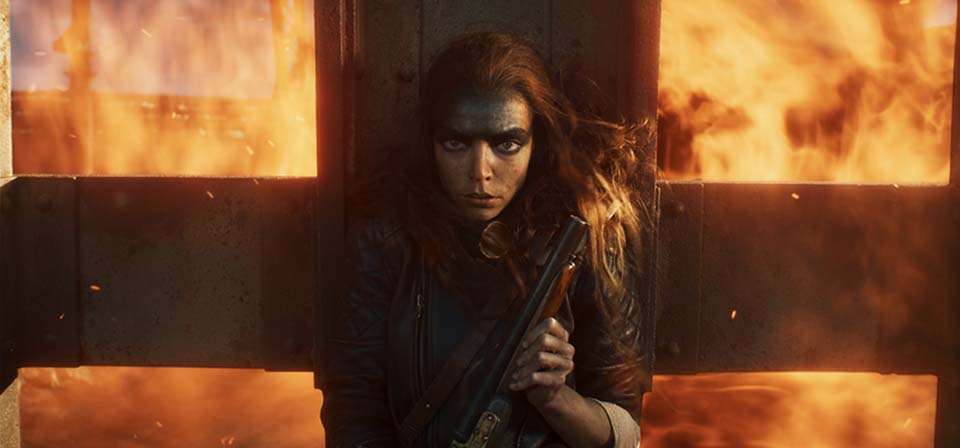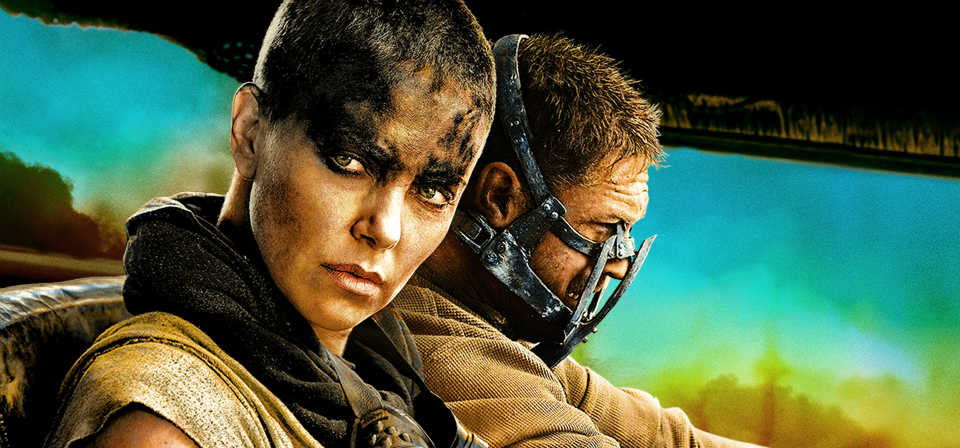Two things I wish George Miller had done differently in Furiosa: A Mad Max Saga
The Fury Road prequel is a satisfying return to the world of the demented 2015 film—but there were two missed opportunities, relating to Immortan Joe’s Wives and Furiosa’s revenge.
George Miller’s Furiosa: A Mad Max Saga is a blast, and, while its box-office crash and burn is disappointing on a number of levels, it’s well-made enough that I’m sure it will go on to be watched, discussed, and even studied for years. (Read my review at U.S. Catholic.)
No, it doesn’t outdo Mad Max: Fury Road’s most insane set pieces, above all the Pole-cats attacking the War Rig, defended by Vuvalini crones along with the Wives and Max himself, all scored by the Doof Warrior’s flame-throwing electric guitar. And, honestly, I wouldn’t want Furiosa to outdo the highlights of Fury Road. This is the prequel; Fury Road should play as the grand climax—and, indeed, the two films fit together so well that it’s no surprise that the stories were developed together before Fury Road was shot, with a plan at one point to shoot them back-to-back.
Furiosa’s action centerpiece—a War Rig assault that plays like an amped-up, land-based version of the Somali pirate attack sequences in the 2013 Tom Hanks movie Captain Phillips—includes no Pole-cats, but the attackers find other ways to get airborne. Some viewers may also be disappointed at the heavier reliance on CGI this time around, given Fury Road’s much-celebrated focus on practical stunts and effects, though the reality is that Fury Road leaned more on CGI than has often been recognized.
My own nagging issues with Furiosa in relation to Fury Road are thematic. Fury Road stands out to me as the series high point not just cinematically, but morally. The Mad Max trilogy starring Mel Gibson leaned heavily on two interrelated forms of violence: a) women suffering sexual menace and violence, and b) men raining vengeance on their enemies. On the first front, Fury Road’s feminist revolt against toxic patriarchy was a welcome corrective. “We are not things” is the message left by the Five Wives—in reality, sex slaves in a eugenic program to produce genetically normal children—of the monstrous tyrant Immortan Joe as they make a desperate bid for escape along with Charlize Theron’s rogue Imperator Furiosa. On the second front, I appreciate that Immortan Joe’s gruesome death at Furiosa’s hands is a quick, efficient bit of business in the heat of battle, not a prolonged or sadistic revenge scene.
Related

Furiosa tells the story of a world (almost) without hope
Is there no hope? This desperate question hangs over the previous film in the saga, Miller’s 2015 extravaganza Mad Max: Fury Road. Now, the same question haunts Furiosa, an epic origin-story prequel for Fury Road’s stealth protagonist, Charlize Theron’s Imperator Furiosa.

“We are not things”: Mad Max: Fury Road and commodifying human life
In another movie, a line like “We are not things” could be a platitude, but in the context of vividly imagined atrocities with unnerving echoes of recent headlines, this simple affirmation is fraught with topical power that has only grown in the months since the film’s theatrical debut.

Mad Max: Fury Road (2015)
In the first act of Mad Max: Fury Road, Tom Hardy’s Max spends more time than you might expect strapped helplessly to the front of a turbo-charged Chevy coupe, maniacally driven by a fanatic through a hellish landscape, an unwilling witness to the chaos ensuing around him. Sitting in the theater, I felt about the same way, I think.
Recent
- Benoit Blanc goes to church: Mysteries and faith in Wake Up Dead Man
- Are there too many Jesus movies?
- Antidote to the digital revolution: Carlo Acutis: Roadmap to Reality
- “Not I, But God”: Interview with Carlo Acutis: Roadmap to Reality director Tim Moriarty
- Gunn’s Superman is silly and sincere, and that’s good. It could be smarter.
Home Video
Copyright © 2000– Steven D. Greydanus. All rights reserved.